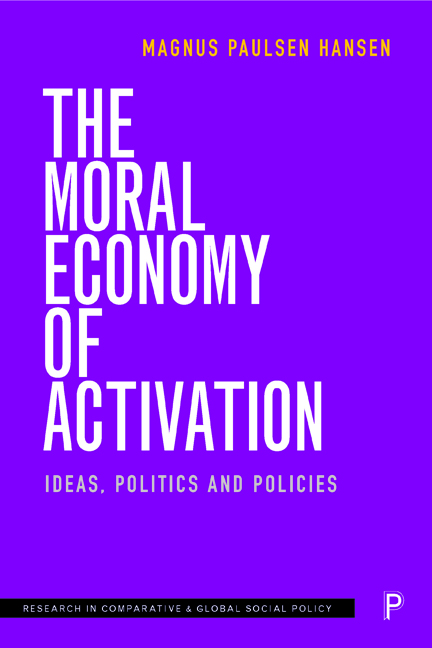7 - Intimate Scandals: Social Assistance, Denmark, 2011–13
Published online by Cambridge University Press: 10 March 2021
Summary
This final chapter of Part II presents the final and most recent case of a reform process – in several ways a spectacular process intensifying governance that was already comprehensive and had been progressively moving towards a system of activation for 25 years. The reform process ‘Everyone can be useful’ (henceforth ECU) was initiated in May 2011 when the future Social Democrat prime minister Helle Thorning-Schmidt gave a speech on Labour Day. ECU, which was adopted around two years later, transformed the benefits system for uninsured unemployed people – the so-called ‘cash benefits system’– in a highly composite way. It reduced benefits and installed an ‘education injunction’ for young recipients, required all ‘able’ recipients to work for their benefit, strengthened sanctions, introduced new instruments aimed at ‘vulnerable’ recipients and young single parents, and created a complex system of profiling in order to categorise the recipients according to a variety of instruments.
Like the vast majority of past reforms, ECU was supported by the major parties, in this case all parties except the Red-Green Alliance (a coalition of movements and former parties on the left). Just as in the past, there was very little involvement from the unions, which traditionally put their efforts into the unemployment insurance system. During the period from the first reform proposal to the adoption of ECU, the process was ‘interrupted’ by two public scandals in which two individual recipients of cash benefits (the benefit for uninsured unemployed people) exemplified its dysfunctions. In different ways, the scandals put to the test the question of whether the system was in fact underpinning the ‘active society’. Figure 7.1 provides an overview of the most significant events.
The chapter is structured as follows. The first section looks into the state's involvement in the governing of uninsured unemployed people since the first ‘social’ reform in 1933. It highlights key changes with a focus on the youth and previous workfare measures. The next five sections present the key qualifications and tests during the reform process, starting with the diagnosis of rising unemployment and in particular youth unemployment in the aftermath of the North Atlantic financial crisis.
- Type
- Chapter
- Information
- The Moral Economy of ActivationIdeas, Politics and Policies, pp. 143 - 170Publisher: Bristol University PressPrint publication year: 2019

